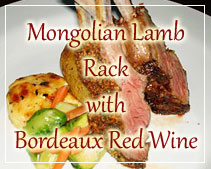Korean food 101
January 20, 2011
Whether you are planning to eat in a Korean restaurant, visit Korea, or cook your own Korean food at home, this quick introduction to Korean cuisine will give you all the basics you need.
The Side Dishes
Korean food stands out from other cuisines with the many side dishes (banchan) that are served during meals. The number of side dishes can range anywhere from 2 to 12, but everyday meals feature at least a few. So when you eat at a Korean restaurant, your various side dishes will come to you before your meal in small bowls, and can be anything from vegetables to meat to seafood prepared in any number of ways. Korean dishes are all served at the same time, so there are no separate courses like in Western cuisines.
The Basics
Rice is the backbone of almost every Korean meal. On rare occasions, noodles will replace the rice, but the vast majority of the time, every person eats a bowl of rice with their meal. Typically, each person will also have their own bowl of soup or stew. The side dishes and main dish or dishes, which can be meat, seafood, or tofu are all be served family-style in the middle of the table. Sometimes a large stew will replace the main dish and will be served family-style at the table.
Common Ingredients
Koreans have perfected the art of preserving food over thousands of years, so many of the side dishes are pickled, salted, or fermented and many are spicy. Kimchi, Korea’s famous spicy cabbage, has over a hundred varieties with different vegetables, including some non-spicy types. Even though Korean stews and soups are served very hot (almost boiling), many of the side dishes are served cold or at room temperature.
Korea is a peninsula, so Koreans eat a lot of seafood although meat has become very popular in the last 50 or so years. The most common spices and sauces used in Korean cuisine are: sesame oil, chili pepper paste (kochujang), chili pepper flakes (kochukaru), soybean paste (daenjang), soy sauce, garlic, ginger, and scallions. As a result, much of Korean cuisine is intensely flavored, savory, and bold.
The Little Things
Everything, including meat and poultry, is cut into bite-sised pieces so there is no need for a knife. Koreans are also adept at using chopsticks so if the meat is too large or a whole grilled fish is served, it can be split with chopsticks. (Many Korean meat dishes are braised or marinated for a long time for a tender flesh). Korean food is traditionally eaten with stainless steel chopsticks and a long stainless steel spoon and is traditionally served at a low table with people sitting on the floor.
Some Korean Culinary History
Korean cuisine has been affected by its geography (peninsula), climate (hot, humid summers and very cold winters), proximity to neighbors China and Japan, and the Japanese occupation from 1910-1945. European traders also had an impact in the cuisine with the Portuguese introduction of chili peppers to Korea in the 17th century. By the 18th century, chili peppers were already being widely used in the preparation of Korean cuisine.
Source: http://koreanfood.about.com/od/koreanfoodbasics/a/Korean101.htm
Are these articles useful for enhancing your wine and dine experience in the Philippines. Do they also help you with travel, leisure, vacation, dining out, nightlife and other leisure activities plans in Manila and other major cities of Philippines? Yats Restaurant hopes to provide you with ample information so you can plan your trips to Pampanga Angeles City Clark Freeport Zone whether you are travelling from Manila or other Asian countries such as Hong Kong, Shanghai, Singapore, Malaysia or Korea.
Restaurant reservations in Manila Philippines, planning of menu, selection of wine for dinner and booking a private function and event in Angeles City Clark Freeport Zone can all be handled. Yats Restaurant and Wine Bar has been regarded by many to be the premier restaurant north of Manila Philippines. Its 3000-line award-winning restaurant wine list has kept many wine lovers happy dining in this restaurant in Angeles City Clark Philippines for over a decade.
Yats Restaurant and Wine Bar was built by Hong Kong-based Yats International in 2000 to provide a world-class cozy fine dining restaurant, business meeting facilities and venues for private dinners and functions in Pampanga Angeles City Clark Freeport Zone. Pampanga Angeles City Clark Philippines was selected for this restaurant because of safety, clean air, absence of traffic and proximity to Manila and Subic.
For comments, inquiries and reservations, email Restaurant@Yats-International.com or call these numbers:
(045) 599-5600 0922-870-5178 0917-520-4401
Http://www.YatsRestaurant.com
Getting to this fine dining restaurant of Angeles City Clark Freeport Zone Pampanga Philippines
How to get to this fine-dining restaurant in Clark Philippines? Once you get to Clark Freeport, go straight until you hit Mimosa. After you enter Mimosa, stay on the left on Mimosa Drive, go past the Holiday Inn and Yats Restaurant (green top, independent 1-storey structure) is on your left. Just past the Yats Restaurant is the London Pub.









